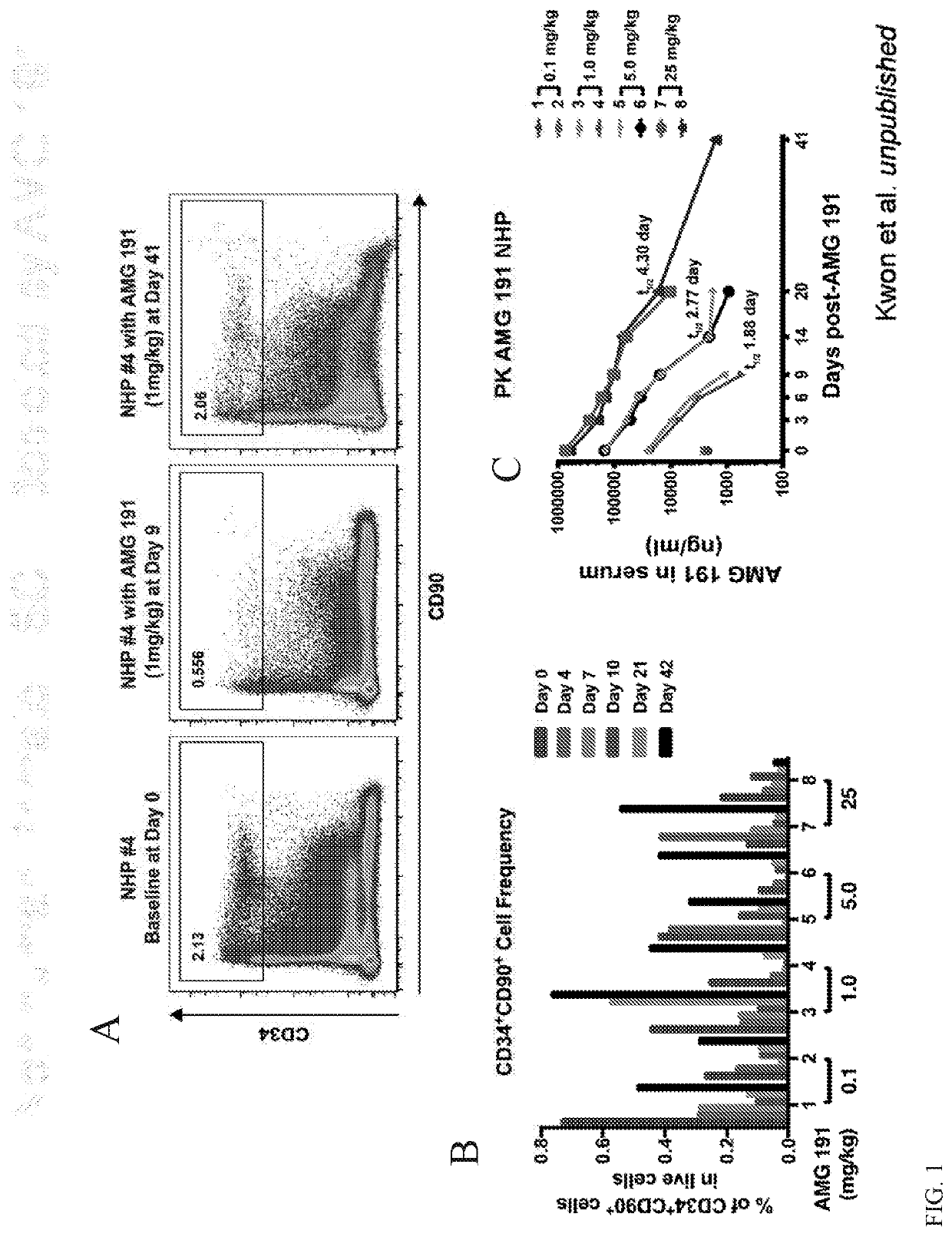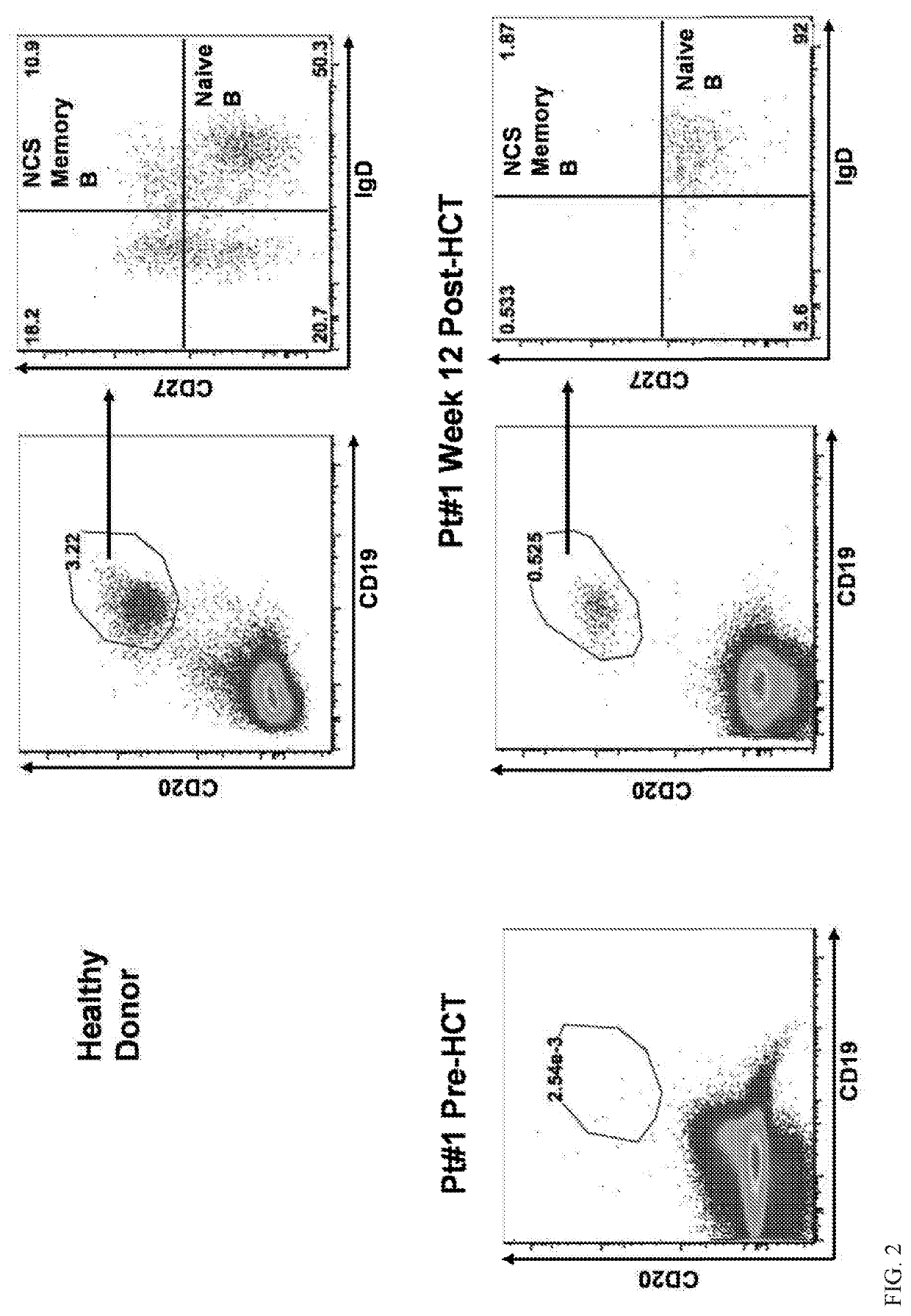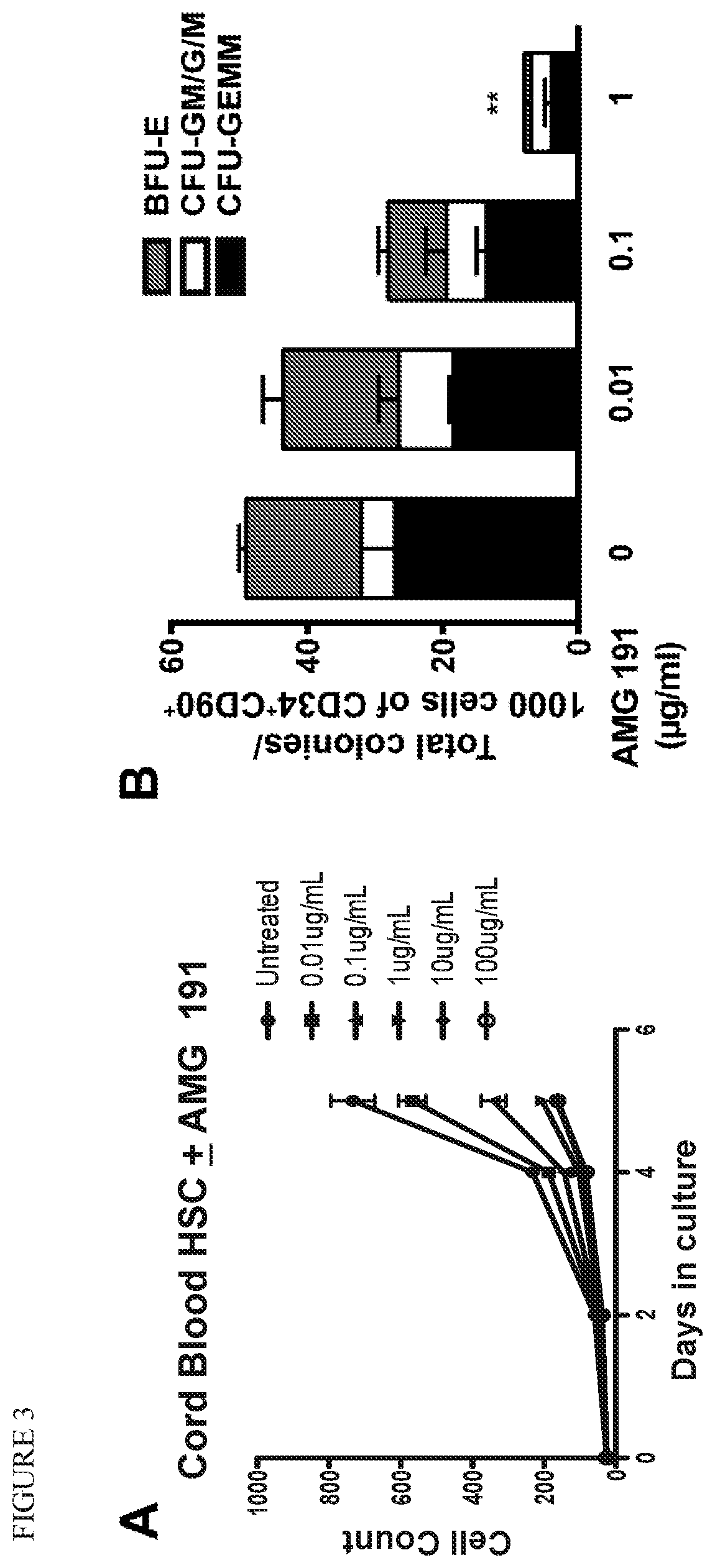Hematopoietic Stem Cell Engraftment
a technology of hematopoietic stem cells and engraftment, which is applied in the field of hematopoietic stem cell engraftment, can solve the problems of weakening the effect of eliminating the underlying diseased blood stem cells, limiting the potential limiting the clinical utility of bmt, etc., to achieve the effect of facilitating hsc engraftmen
- Summary
- Abstract
- Description
- Claims
- Application Information
AI Technical Summary
Benefits of technology
Problems solved by technology
Method used
Image
Examples
example 1
[0092]Successful hematopoietic cell transplantation (HCT) requires emptying hematopoietic stem cell (HSC) niches to permit cell engraftment that can provide life-long donor derived blood formation. Because no alternatives exist, current clinical practice relies on DNA damaging radiation (XRT) or chemotherapy to achieve niche clearance. We have pursued a non-toxic approach to target and deplete HSC with monoclonal antibodies (mAbs) that bind CD117 (cKit). CD117 is a receptor tyrosine kinase expressed on the surface of HSC and early hematopoietic progenitors as well as other non-hematopoietic cells. Ligation of CD117 by its ligand, stem cell factor (SCF), transmits intracellular signals necessary for HSC survival, proliferation and differentiation.
[0093]Preclinical studies in lymphocyte deficient mice showed that a single dose of a mAb targeting CD117 results in transient HSC depletion and permits engraftment of purified HSC, proof-of-concept that anti-CD117 mAbs might be used to repl...
example 2
An Antibody Against CD117 can Enable Hematopoietic Stem Cell Engraftment in Patients Undergoing Transplantation
[0101]Successful hematopoietic cell transplantation (HCT) requires emptying hematopoietic stem cell (HSC) niches to permit HSC engraftment. Currently HCT relies on DNA damaging radiation (XRT) or chemotherapy to achieve niche clearance. We have pursued a non-toxic approach to target and deplete HSC with monoclonal antibodies (mAbs) that bind CD117 (cKit). CD117 is a receptor tyrosine kinase expressed on the surface of HSC and progenitors. Ligation of CD117 by stem cell factor (SCF) transmits signals for HSC survival, proliferation and differentiation. We determined that a humanized anti-CD117 mAb (AMG 191) depletes human HSC in mice xenografted with human cells and safely depletes HSC of non-human primates (NHP).
[0102]Here we report early results from our phase 1 dose escalation trial which tests AMG 191 as the sole conditioning agent for patients undergoing HCT for severe ...
example 3
[0105]A fundamental requirement for a successful BMT is the life-long engraftment of recipients with replacement hematopoietic stem cells (HSC). Achievement of durable HSC engraftment involves multiple factors including the recipient conditioning regimen, the nature of the genetic disparity between donor and recipient, and the content of the hematopoietic graft. Animal and clinical studies have shown that the biology of host resistance is complex, involving both immune and non-immune elements. The primary immune mediators of allogeneic HSC resistance are T lymphocytes and NK cells. This application focuses on the non-immune barriers to HSC engraftment which apply to both allogeneic or autologous gene corrected HSC. At present, in clinical practice, the only method for overcoming this non-immune barrier is to treat recipients with toxic DNA-damaging chemotherapy (i.e., busulfan, melphalan) or radiation.
[0106]An anti-CD117 mAb (AMG 191) that specifically depletes endogenous HSC with m...
PUM
| Property | Measurement | Unit |
|---|---|---|
| Fraction | aaaaa | aaaaa |
| Dimensionless property | aaaaa | aaaaa |
| Fraction | aaaaa | aaaaa |
Abstract
Description
Claims
Application Information
 Login to View More
Login to View More - R&D
- Intellectual Property
- Life Sciences
- Materials
- Tech Scout
- Unparalleled Data Quality
- Higher Quality Content
- 60% Fewer Hallucinations
Browse by: Latest US Patents, China's latest patents, Technical Efficacy Thesaurus, Application Domain, Technology Topic, Popular Technical Reports.
© 2025 PatSnap. All rights reserved.Legal|Privacy policy|Modern Slavery Act Transparency Statement|Sitemap|About US| Contact US: help@patsnap.com



